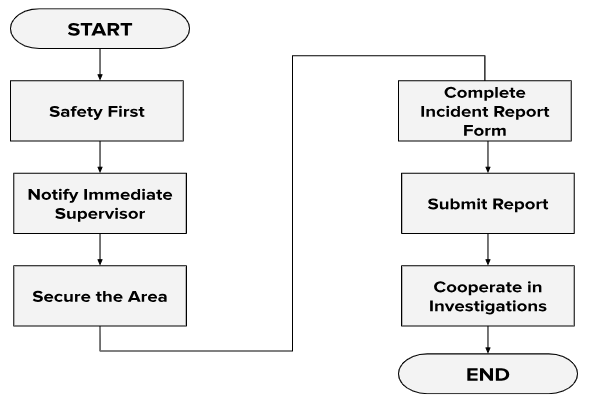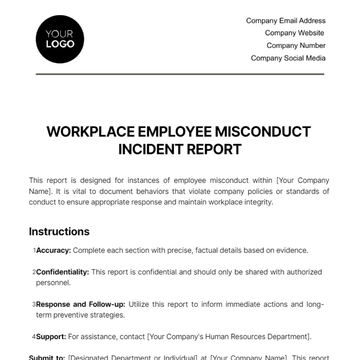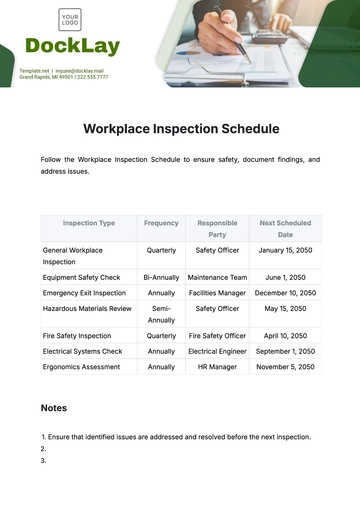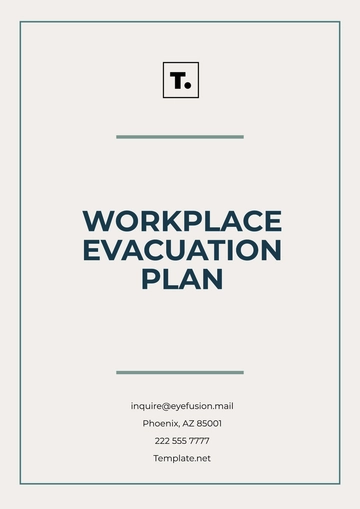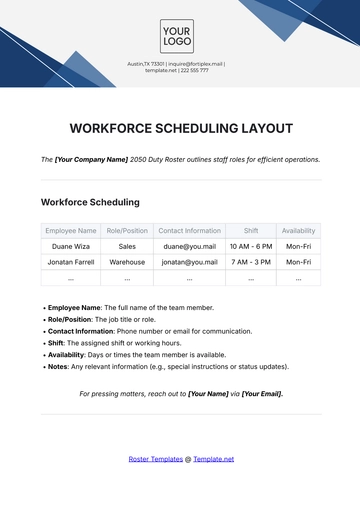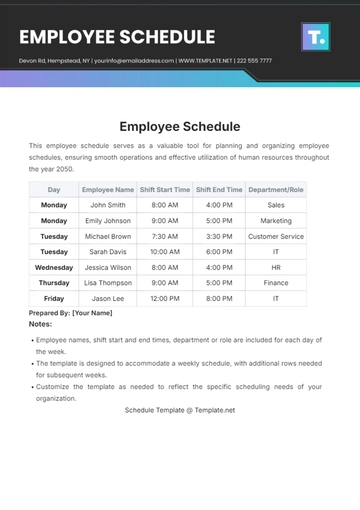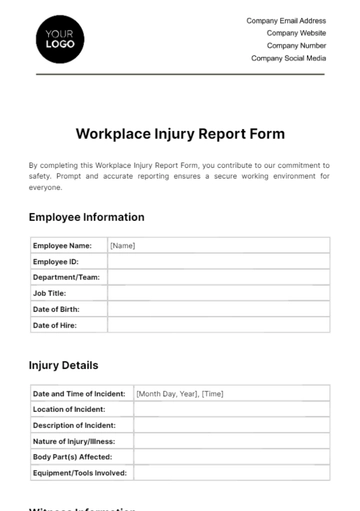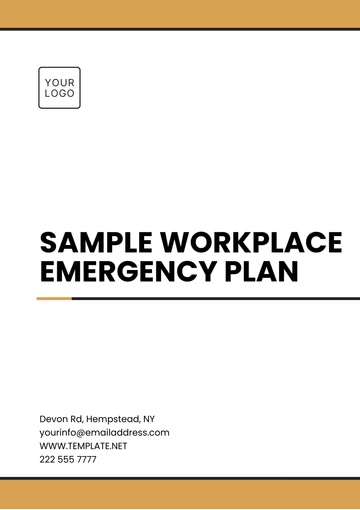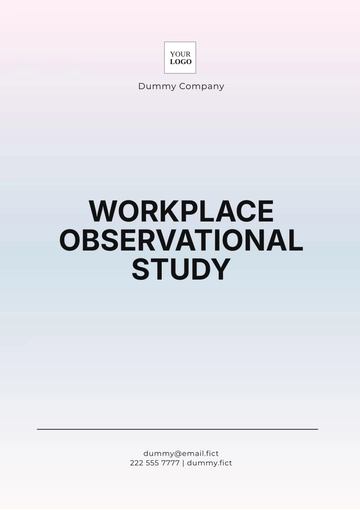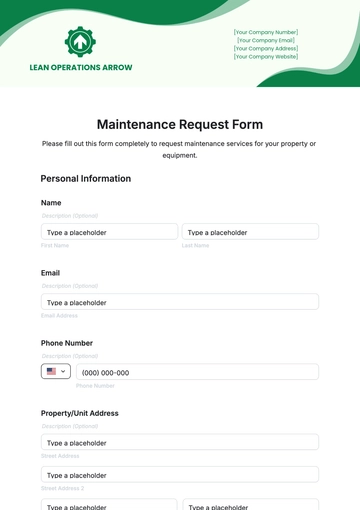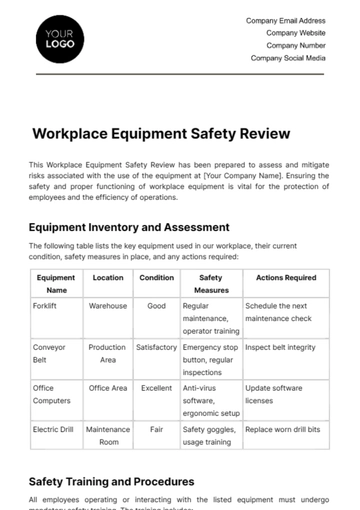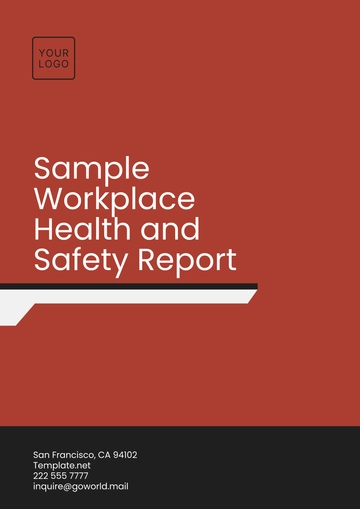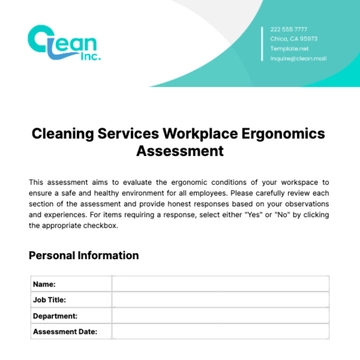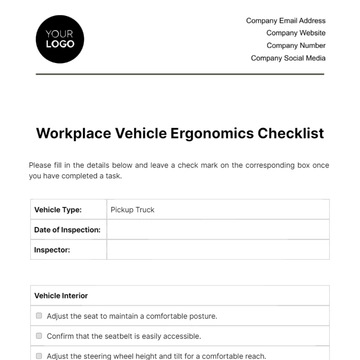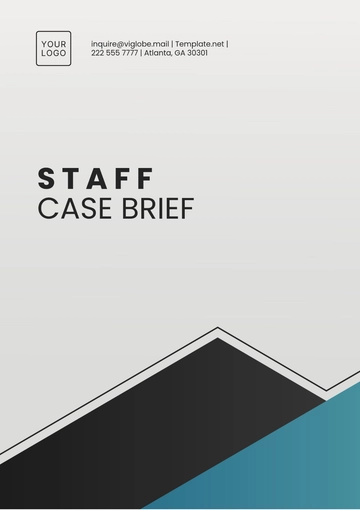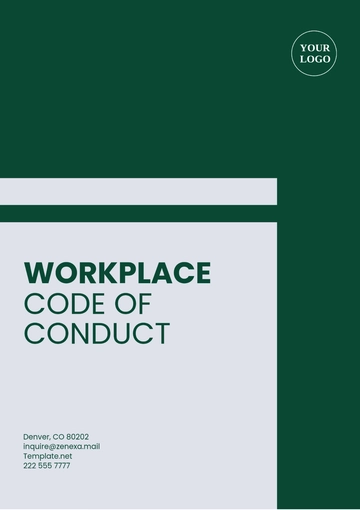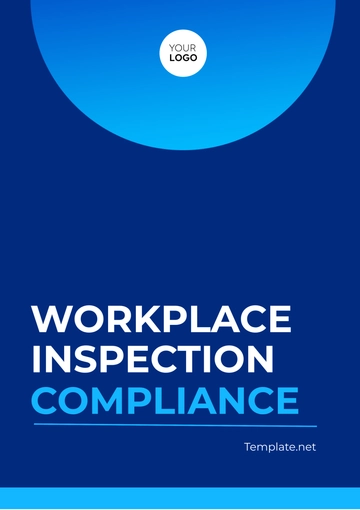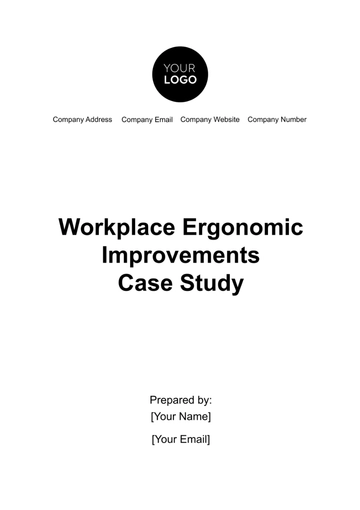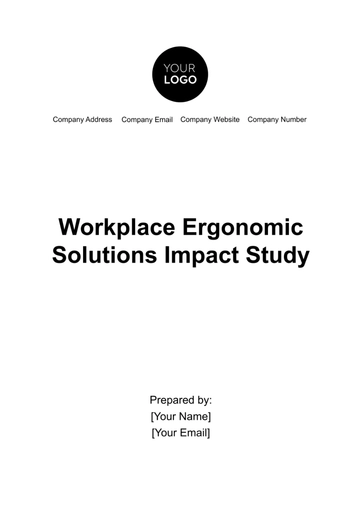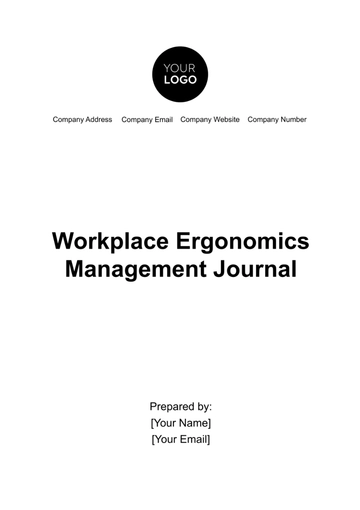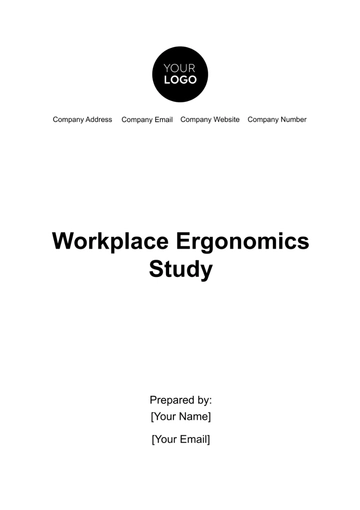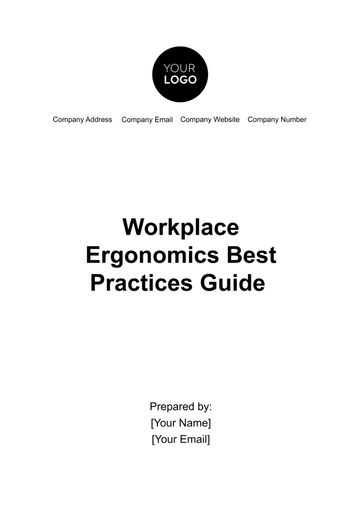Free Workplace Incident Response User Guide
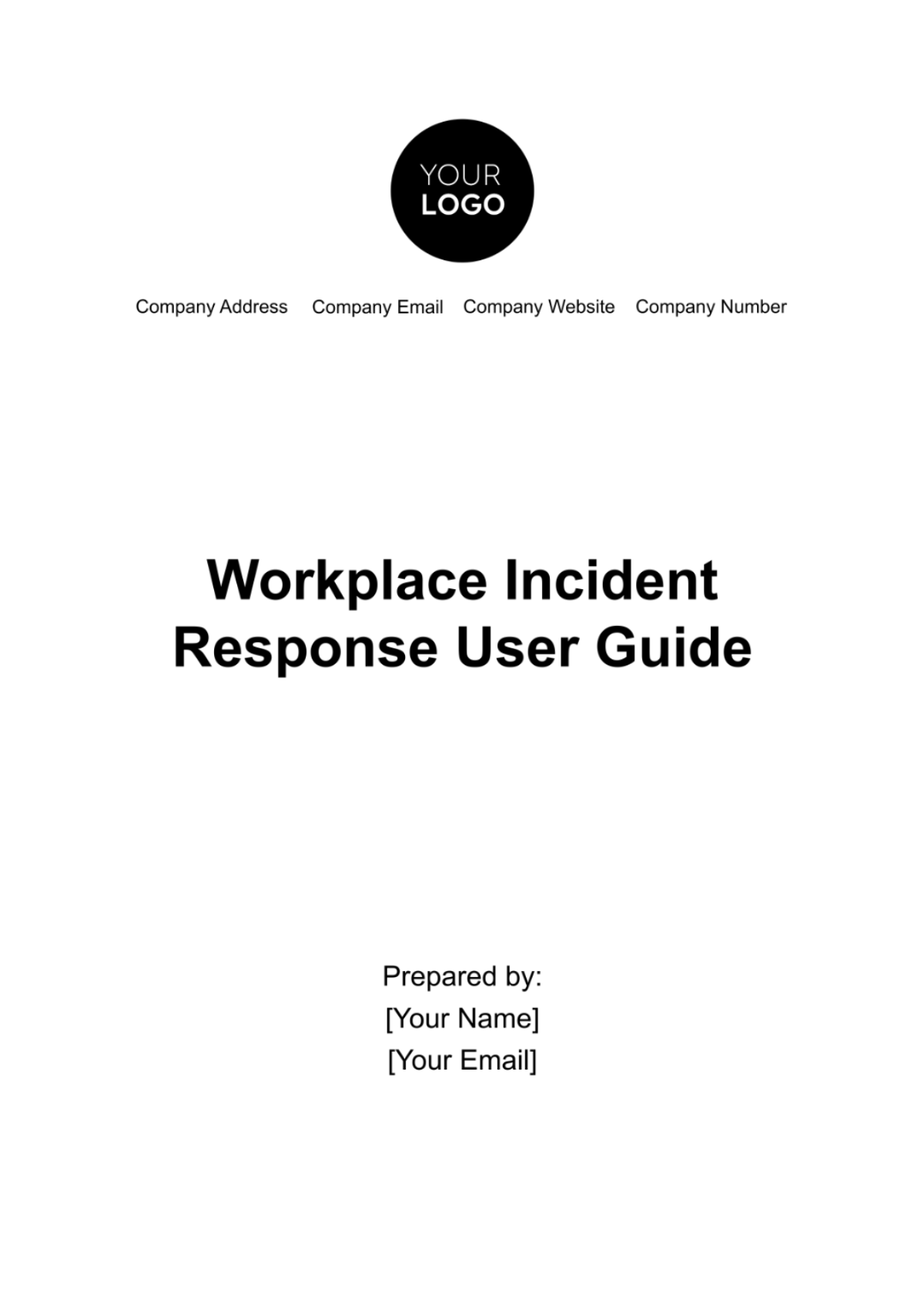
Introduction
Welcome to the [Your Company Name] Workplace Incident Response User Guide. This guide is your essential resource for understanding how to respond effectively to incidents and emergencies within our workplace. Its purpose is to safeguard the well-being of all individuals on our premises, ensuring compliance with US health and safety standards.
Emergency Contact Information
This section is dedicated to ensuring quick access to assistance during emergencies. It provides contact details for external emergency services and internal contacts responsible for coordinating responses within our organization.
Emergency Services Phone Numbers
Service | Phone Number |
Police | 911 |
Fire Department | 911 |
Medical Services | 911 |
Internal Emergency Contacts
Contact Person | Position | Phone Number |
Anthony Lee | Safety Manager | (555) 123-4567 |
Bernadette Gonzales | Facilities Manager | (555) 987-6543 |
Cindy Gale | HR Director | (555) 567-8901 |
Incident Reporting
In the event of an incident, accident, or near miss, it is vital to promptly and accurately report the details to ensure a swift response and prevent future occurrences. Follow these steps:
Incident Report Form
Please use the provided Incident Report Form to document incident details accurately. This form includes fields for essential information, such as:
Date and Time of Incident
Location
Description of Incident
Names of Individuals Involved
Witness Statements
Actions Taken
Preventive Measures (if applicable)
Remember, reporting incidents promptly and accurately is crucial for maintaining a safe workplace and complying with US health and safety standards. Your cooperation is essential in preventing future incidents.
Emergency Evacuation Procedures
In the event of an emergency requiring evacuation, it is essential to ensure the safety of all individuals within our workplace. This section outlines our evacuation procedures, including evacuation routes, assembly points, and special assistance procedures to accommodate individuals with special needs, by US health and safety standards.
Evacuation Routes
Familiarize yourself with the primary evacuation routes posted throughout the facility. These routes are designed to lead you to safety quickly.
Secondary evacuation routes are available in case the primary routes are obstructed. Ensure you are aware of these alternatives.
Evacuation route maps are prominently displayed in common areas, and they indicate the nearest exits and the path to assembly points.
Assembly Points
There are designated assembly points located in the following areas:
North Parking Lot: For occupants of the North Wing.
South Courtyard: For occupants of the South Wing.
In the event of an evacuation, proceed calmly and quickly to the nearest assembly point.
Once at the assembly point, stay clear of buildings and emergency response routes to allow emergency personnel to access the area.
Remain at the assembly point until an "all clear" signal is given by designated personnel or emergency services.
Special Assistance Procedures
Individuals with special needs or disabilities will receive assistance during evacuations. If you require assistance or are assisting someone with special needs:
Notify your supervisor or designated personnel immediately.
If safe to do so, assist individuals with mobility impairments to the nearest safe exit or designated area of refuge.
Communicate with designated personnel about any specific needs or requirements.
Our commitment to safety includes ensuring that all employees, visitors, and individuals with special needs can evacuate safely. Please familiarize yourself with evacuation routes, assembly points, and these special assistance procedures to contribute to a safe workplace environment. Your cooperation is essential in maintaining the safety of all.
First Aid and Medical Assistance
In the interest of everyone's safety and well-being, it's crucial to be aware of the availability of first aid resources and trained personnel within our workplace. This section provides information on the location of first aid kits and a list of employees trained to offer initial medical assistance in compliance with US health and safety standards.
Location of First Aid Kits
First aid kits are strategically placed throughout the workplace for quick and easy access. They can be found in the following locations:
Break Room: Next to the vending machines.
Main Lobby: Near the security desk.
Production Area: Adjacent to the supervisor's office.
Office Wing: On each floor, near the copy rooms.
List of Trained First Aid Responders
Employee Name | Department/Role |
Shaun Park | Safety Manager |
Lucia Hart | HR Manager |
Benjamin White | Facilities Supervisor |
Jonas Shen | Production Lead |
Belinda Perez | Maintenance Technician |
Myles Johnson | Office Administrator |
These individuals have received comprehensive first-aid training and are equipped to provide immediate assistance in the event of injuries or medical emergencies. If you require medical attention or encounter an emergency, please seek assistance from one of these trained responders or contact 911 for more severe cases. Your safety is our priority, and we are dedicated to maintaining a secure and healthy workplace.
Fire Safety
Ensuring fire safety is a top priority in our workplace. This section outlines fire prevention measures, the operation of fire alarm systems, and the locations of fire extinguishers, all of which comply with US health and safety standards.
Fire Prevention Measures
Fire prevention is everyone's responsibility. Follow these measures to minimize fire risks:
Avoid overcrowding areas with electrical equipment.
Keep flammable materials properly stored and away from heat sources.
Do not overload electrical outlets or use damaged cords.
Report and repair any faulty electrical equipment promptly.
Familiarize yourself with the location of emergency exits and evacuation routes.
Fire Alarm Systems
Our facility is equipped with state-of-the-art fire alarm systems. In the event of a fire, the following will occur:
Smoke detectors will activate.
Fire alarm bells and strobe lights will provide both audible and visual alerts.
Emergency notification systems will broadcast evacuation instructions over the public address system.
Fire Extinguisher Locations
Fire extinguishers are strategically located throughout the facility, easily accessible in case of a fire emergency. You can find them in the following areas:
Break Room: Next to the entrance.
Main Corridors: Every 100 feet.
Production Area: Near the supervisor's office.
Office Wing: On each floor, near the stairwell.
Your knowledge of these fire safety measures is crucial for maintaining a secure working environment. In case of a fire, remember to prioritize safety, evacuate using the designated routes, and use fire extinguishers only if trained to do so and when it is safe.
Chemical Spills and Hazardous Materials
Ensuring the safe handling of chemicals and addressing potential spills is essential to our workplace safety. This section outlines proper handling procedures for chemical spills and provides emergency contacts for hazardous materials incidents, in full compliance with US health and safety standards.
Handling Procedures
In the event of a chemical spill:
Immediately alert others in the area.
Evacuate the spill area, if safe to do so.
Isolate the spill by closing doors or using barriers.
Contact a trained individual for cleanup.
If hazardous, activate emergency response protocols.
Emergency Contacts for Chemical Spills
For hazardous materials incidents or chemical spills, contact the following emergency contacts immediately:
Emergency Response Team: 555-12345
Environmental Health and Safety Officer: [Emergency Contact Number]
Security Incidents
To maintain a secure workplace environment, it is crucial to report suspicious activities and respond effectively to security threats, aligning with US health and safety standards.
Suspicious Activity Reporting
If you observe any suspicious activity or behavior:
Immediately report it to your supervisor or designated security personnel.
Provide detailed information, including date, time, location, and descriptions of individuals or incidents.
Do not confront or intervene in the situation; let trained personnel handle it.
Response to Security Threats
In case of a security threat:
Evacuate if instructed or if there's an immediate danger.
Follow established lockdown procedures.
Contact emergency services (911) if required.
Cooperate fully with law enforcement and security personnel during the response.
Natural Disasters
To ensure the safety of all employees and visitors during natural disasters, this section outlines response procedures for severe weather and earthquake events, by US health and safety standards.
Procedures for Severe Weather
In the event of severe weather, such as storms, tornadoes, or hurricanes:
Stay informed through weather alerts and notifications.
Seek shelter in designated safe areas or interior rooms.
Avoid windows and glass structures.
Remain in the shelter until an "all clear" signal is given.
Earthquake Safety Measures
In the event of an earthquake:
"Drop, Cover, and Hold On" during shaking.
Stay indoors, away from windows, heavy objects, and exit doors.
After shaking stops, check for injuries and provide first aid if trained.
Evacuate if there's immediate danger or if instructed to do so.
Training and Drills
To maintain a high level of preparedness in emergencies, this section outlines training requirements for employees and the frequency of emergency drills in line with US health and safety standards.
Training Requirements
All employees must complete an initial orientation on workplace safety and emergency procedures within the first week of employment.
Annual refresher training is mandatory for all employees to reinforce safety protocols.
Specific job-related safety training is required for employees working with hazardous materials, equipment, or specialized tasks.
Frequency of Drills
Fire Drills: Conducted quarterly to ensure familiarity with evacuation procedures.
Severe Weather Drills: Conducted semi-annually in coordination with local weather awareness campaigns.
Earthquake Drills: Conducted annually, coinciding with Earthquake Preparedness Month.
Participation in these drills is essential for a safe workplace. Training and practice help us respond effectively to emergencies, protecting both employees and visitors.
- 100% Customizable, free editor
- Access 1 Million+ Templates, photo’s & graphics
- Download or share as a template
- Click and replace photos, graphics, text, backgrounds
- Resize, crop, AI write & more
- Access advanced editor
Introducing Template.net's Workplace Incident Response User Guide Template, your essential resource for handling workplace incidents effectively. This editable and customizable guide, powered by our AI Editor Tool, enables you to create tailored response plans swiftly. Streamline incident management and ensure workplace safety with Template.net's user-friendly solutions.
